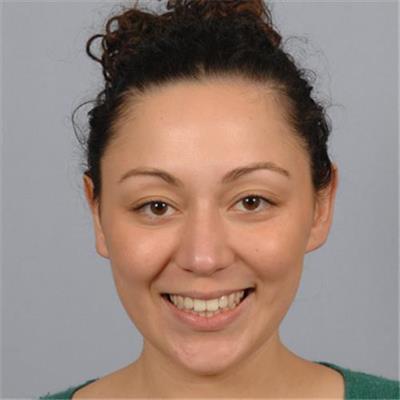Haematology
Utilising the power of laboratory and clinical expertise to improve the lives of children.
Infants and children have a lower incidence of bleeding and blood clotting events than adults. By understanding the balance between bleeding and clotting in healthy children we can improve the quality of care delivered to sick children and develop strategies to prevent thrombosis in children and adults.
Our group explores Developmental Haemostasis (how the blood’s clotting system matures with age). There are age-associated alterations in levels of coagulation proteins and their function. We are the only team in Australia and one of three teams in the world performing this type of research. They established the only age-specific reference ranges for coagulation proteins in an Australian population that has adopted inpatient care nationally and internationally.
The researchers’ novel approach has shown:
- differences in the concentration, structure and function of coagulation proteins with age
- differences in the platelet phenotype and function in children compared to adults
- differences in blood clot formation, and structure in children compared to adults
- concept of “ageing of the plasma proteome”
- pharmacokinetics, pharmacodynamics and monitoring strategies for currently used and novel anticoagulants in children.
We have also led international clinical guidelines and position papers for the International Society for Thrombosis and Haemostasis.
More information
Group Leaders

Group Members


Our projects
Developmental haemostasis

Harmonizing Age Pathology Parameters in (HAPPI) Kids Study
We are aiming to collect blood samples from around 5,000 children between birth and 18 years, so we can establish normative data for age-appropriate reference intervals in haematology, immunology, and biochemistry for the paediatric population for The Royal Children's Hospital and for laboratories throughout the state of Victoria.
Read more...Intranasal Heparin Trial (INHERIT)
This trial is testing Intranasal Heparin to treat early COVID-19 infection.
Read more...Platelet phenotype and function
Platelets are critical in thrombosis and inflammation but have not been studied in children. Our group has recently showed for the first time increased circulating monocyte-platelet aggregates (MPAs) in children and increased responsiveness to platelet agonists. The preliminary data also shows age-specific changes in the platelet proteome and platelet proteins secreted following platelet activation. This study aims to determine the age-specific differences in platelets responsible for differences in platelet function in children compared to adults.
Anticoagulation
Anticoagulants and antithrombotics (heparin, rivaroxaban, warfarin, aspirin)
Because of recent major advances in the surgical and medical management of children with complex diseases, many of these children are now surviving into adulthood. Despite these advances, many children require ongoing medication to prevent complications such as blood clots and stroke. Anticoagulants, sometimes referred to as ‘blood thinners’, are used to prevent blood clots and stroke. The group’s research has shown that the blood clotting system in children differs significantly from that in adults. Because of these differences, the team has dedicated many years to investigate the effect of different anticoagulants on children. This research has become even more vital to the development of new anticoagulants. The team’s ongoing research in this area has become crucial to the effective and safe management of anticoagulants in children now and in the future.
Researchers will aim to determine the specific effects of anticoagulants in children and to improve current strategies for monitoring these drugs in children, by studying plasma samples from newborns to adults and anticoagulants in unwell children at the Royal Children’s Hospital.
Heparin mimics
Synthetically produced anticoagulants have the potential to overcome the significant safety issues associated with heparin. This study aims to develop bespoke polymers with suitable anticoagulant profiles for use as replacements for heparin.
Thrombosis and bleeding
Thrombosis – Central Venous Line (CVL)
A CVL is a catheter placed into a large vein in the chest. This study will for the first time document the natural history of asymptomatic central venous line (CVL)-related deep vein thrombosis (DVT) in sick children, allowing appropriate diagnostic and therapeutic strategies to be developed. The study will also identify and provide recommendations on the clinical value of routine ultrasound screening of all children with a CVL for a thrombosis by determining the incidence of clinically significant post-thrombotic syndrome (PTS) a year later. This study will be conducted as a prospective cohort study of 200 children admitted to the Paediatric Intensive Care Unit (PICU), at the Royal Children’s Hospital, Melbourne. The unit admits approximately 1,000 children a year. Of these, over 40 percent have a CVL placed because of heart surgery and a further 30 percent require a CVL for medication support. This data shows that the recruitment of 200 children with CVLs in one year is feasible and practical in this setting.
Bleeding and clotting outcomes post-Fontan surgery
The Fontan procedure is the last of a series of operations offered to children born with only one pumping heart chamber. Without this procedure, these children would die. However, the procedure comes with long-term risks. Many patients have ongoing medical complications after the procedure, including blood clots, stroke and bleeding. The team is currently investigating the long-term outcomes of the Australian and New Zealand (ANZ) Fontan population. This study aims to pinpoint the incidence and identify risk factors for blood clots, stroke and bleeding in the ANZ Fontan population and determine which medications are the best at preventing these complications.
ECMO
Extracorporeal Membrane Oxygenation (ECMO) is a form of cardiopulmonary life support that uses a heart-lung machine to provide artificial oxygenation of the blood and systematic perfusion in patients with severe heart and/or lung failure. Limitations of this therapy include significant complications of bleeding and clotting. This study aims to establish tailored therapy protocols to reduce bleeding and clotting complications for children on ECMO.
Proteomics
Age-mediated differences
Human blood plasma is a complex biological fluid that interacts with an array of bodily systems. Changes in plasma protein expression or the presence or absence of specific proteins are regularly used in a clinic as a molecular biomarker tool. A large body of literature exists detailing proteomic changes in pathologic contexts, however, little research has been conducted on the quantitation of the plasma proteome in age-specific, healthy subjects, especially in pediatrics. Our research focuses on studying variations in protein expression across the age spectrum from neonates to adults.
Thrombin generation
Thrombin generation (TG) is a global analysis of haemostasis that, in theory, could monitor thrombosis risk, anticoagulation management, and guide therapy in bleeding disorders. The current TG methods of care are inadequate because they cannot specifically measure active and free thrombin, relying instead on extrapolation from algorithms. The team has patented a substrate to measure true active thrombin, which this study will analyse for the suitability of its use in patients.
Funding
- National Health and Medical Research Council (NHMRC)
- Medical Research Future Fund (MRFF)
- Royal Children’s Hospital Foundation
- University of Melbourne
- Diagnostica Stago
- Bayer HealthCare
- Astra Zeneca
Collaborations
International
- McMaster Children’s Hospital, Hamilton, Canada: Prof Anthony Chan (Patent)
- Lake Forest Hospital, Chicago, USA: Dr Rukhmi Bhat
- Karolinska Institute, Stockholm, Sweden: Dr Maria Magnusson
- Medical University of Vienna, Austria: Prof Christoph Male
- Hadassah Medical Centre, Jerusalem, Israel: Dr Shoshana Revel-Vilk
- The Children’s Hospital of Philadelphia, USA: A/Prof Leslie Raffini
- Bern University, Switzerland: Prof Maja Steinlin
- Johns Hopkins All Children’s Hospital: Professor Neil Goldenberg
National
- Department of Cardiac Surgery, Royal Children’s Hospital: Prof Igor Konstantinov
- Department of Psychology, Royal Children’s Hospital: Prof Vicki Anderson
- The University of Western Australia: A/Prof Matthew Linden
- Deakin University: Prof Jeff Craig
Industry collaborations
- Diagnostica Stago
- Bayer
- Bristol Myers Squibb
- Roche Diagnostics
- Takeda
- Astra Zeneca
Featured publications
- Severe COVID-19 and coagulopathy: A systematic review and meta-analysis. (PMID:33990830)
- The use of proteomics for blood biomarker research in premature infants: a scoping review. (PMID:33853516)
- Proteomics in Thrombosis and Haemostasis. (PMID: 34753192)
- Whole blood flow cytometry protocol for the assessment of platelet phenotype, function, and cellular interactions. (PMID: 32881599)
- Mechanism of bilirubin elimination in urine: insights and prospects for neonatal jaundice. (PMID: 33554547)
+ Show/hide all publications
